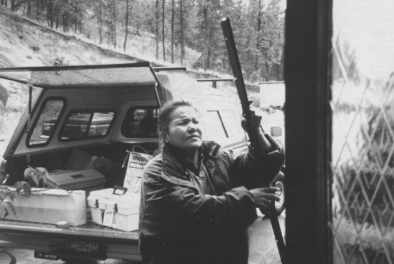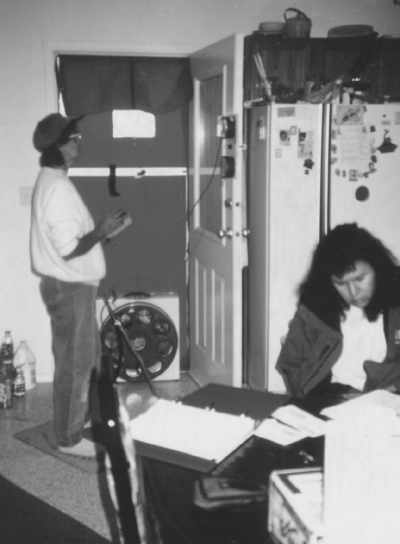BC21 PowerSmart
BC21 PowerSmart is a province wide project to conserve resources and create jobs. Residential energy efficiency audits are conducted, and incentives are offered to encourage residents to take steps to improve energy and water efficiency.
Background
In April, 1995, the British Columbia Government joined forces with the province's electric and gas utilities and credit unions to implement BC21 PowerSmart. Rather than focusing on efficiency improvements for either gas or electricity, as past programs had tended to do, a comprehensive approach was taken that addressed both.
Setting Objectives
BC21 PowerSmart gave itself goals of:
- reducing water consumption by 3.8 m 3
- achieving a 21.7 Gwh reduction in electrical energy consumption
- reducing natural gas consumption by 145,000 GJ
- creating 488 person years of employment
Delivering the Program
Four contractors were retained to carry out one-hour energy efficiency audits in their regions (Home Visits). They, in turn, hired and trained the home audit teams, each of which was usually made up of one woman and one man. Once the audit was completed, the team offered to install any energy-saving products which were needed, with a limit of one of each product per home. The products included a hot water tank blanket, pipe insulation, weather-stripping, caulking, gasket plugs, faucet aerators, flush reducers, and low-flow shower heads. As an incentive to participate, both the audit and the products were provided free of charge (Financial Incentives and Disincentives).
At the end of the home visit, recommendations for further action were made. Information brochures were left behind, along with discount coupons for additional products such as compact fluorescent light bulbs, gas fireplaces, energy-efficient windows and set-back thermostats. Less than 1 percent of the coupons were redeemed.
Several weeks after the installation was complete, utility employees returned to the homes to verify that the products had been installed correctly and that the householders were satisfied.
To promote the program, advertisements were aired on television and radio, and several radio talk shows featured the program (Mass Media). Newspaper and magazine advertisements invited residents to enrol for a home audit. Municipal representatives were invited to visit selected homes in each community to "observe" local installations, and these events were publicized. Ads were also placed on the sides of buses and included as inserts in utility bills. The program was promoted by staffing booths at shopping malls, special events and home shows; these approaches were found to be too labour intensive.
While the communications campaign was instrumental in informing the public about BC21 PowerSmart, word-of-mouth was found to be the catalyst which prompted most people to enrol in the program (Word-of-mouth). Of all calls for appointments, 60 percent to 80 percent were made by people who had spoken to a relative or neighbour who had received a home visit and was very satisfied with the experience.
Okanagan First Nations Community Project
An extended version of the BC21 PowerSmart project was introduced in the Okanagan Valley - one of four community-based PowerSmart projects. In addition to creating jobs and conserving resources, this program also focused on training First Nations members and improving their housing stock. The home visits were similar to those described above.
A BC21 PowerSmart Okanagan First Nations Committee, made up of representatives from each of the six participating bands, was established to provide input about the specific needs of the community. This was essential for the program's success, as there were some very sensitive issues which needed to be addressed, including political friction between band chiefs and the government, and a general mistrust of the government within the community. It was important to introduce the program as being neutral. To help achieve this, the project manager's office was set up in his home in the Okanagan Valley, rather than in a government or band council facility. To help overcome skepticism about the project by householders, First Nations members were hired as staff (Overcoming Specific Barriers).
Staff who conducted the home visits received on-the-job training from professional installers in basic building technology, product installation, customer service, and documentation and reporting. This helped them to provide related services to their own community, and to compete for utility and government contracts.
Project participants reported being very satisfied with the products and the level of service they received. They were happy that the project provided a service from which they could benefit. Some reported that they did not often see where and how monetary aid was spent for the benefit of the community.
Financing the Program
p>Twenty million dollars was budgeted for this program. At the end of 1996 about $15 million had been spent on the following:
| Salaries | $ 1,240,000 |
| Special projects | $ 1,005,000 |
| Advertising and promotion | $ 900,000 |
| Overhead | $ 580,000 |
| Training | $ 37,000 |
| Credit facility set up | $ 25,000 |
| Other | $ 125,000 |
| * * * | |
| Funding was provided by: | |
| B.C. Government | $ 15 million |
| B.C. Hydro | $ 3 million |
| Utilities, Credit Unions and Greater Vancouver Regional District | $ 2 million |
Measuring Achievements
At the conclusion of each home audit, the installer completed a form indicating what products had been installed. This information was used to estimate the resulting savings in water and energy consumption from the program.
A follow-up survey was conducted with 5,000 participants to measure satisfaction with the installations and to determine how many additional products were purchased by residents after their home visits. Most of the interviews were carried out by telephone, but a portion were completed during the quality assurance visits. As of March 1997, the results of this survey were not yet available.
Feedback
A letter of thanks was published in local newspapers and announcements were made on the radio. People across the province were thanked for their participation and were informed of how much energy and water had been saved.
Contacts
Mike Tanner
B.C. Hydro
6911 Southpoint Drive (E 14)
Burnaby, British Columbia
V3N 4X8
(604) 528-1410
Fax: (604) 528-7781
E-mail: mike.tanner@bchydro.bc.ca
Warren Bell
B.C. Ministry of Employment and Investment
1810 Blanshard Street
Victoria, British Columbia
(604) 952-0244
Fax: (604) 952-0241
E-mail: wbell@galexi.gov.bc.ca
Don Cromarty
1975 Springfield Road
Kelowna, British Columbia
V1Y 7V7
(604) 868-4517
Fax: (604) 868-4524
Notes
This case study was originally published in 1998 in "Tools of Change: Proven Methods for Promoting Environmental Citizneship" by Jay Kassirer and Doug McKenzie-Mohr (Published by Canada's National Round Table on the Environment and the Economy)
Search the Case Studies


